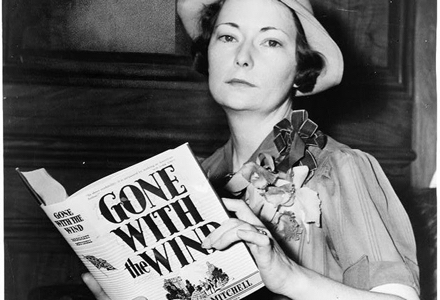Living in the Southern Shadow
By Kelsey Asher, SFK Press

If you think of writing as paint by numbers, then writers, or word painters, take to canvas and color in and out of the lines, but ultimately the landscapes they portray keep the edges they started with from the beginning, more or less. The way the reader views the scene changes via the writer’s lens—their artistic choices, which are influenced by family, life experiences, and cultural upbringing.
Icons such as Eudora Welty or Flannery O’Connor would still be great authors if they lived and wrote in Boston, Massachusetts or Princeton, New Jersey, but their literary world would be painted with different shades and shapes. Origin, region, and culture play a significant role in the classification of a writer, but claiming a writer is only Southern if they write about the South seems suffocating and narrow-minded. Dr. Margaret Mitchell, blessed with a literary name that attracts attention, especially in the Southern writing world, is a University of West Georgia professor, new author, and transplanted New Yorker, striving to avoid the humidity. She probably does not fit into the Southern writer box. Yet, it’s still possible to deem her a Southern writer.

At a recent reading, Dr. Mitchell addressed her decision to publish under the name Maggie Mitchell, instead of Margaret Mitchell. She reasoned that she did not want to confuse and infuriate the reading masses who might compare her to the Gone With the Wind author. She takes the naming coincidence in stride, and rather than carry a literary giant on her shoulders, Mitchell has set her first novel, Pretty Is, mainly in Hollywood and New York.
In the novel, Lois and Carly, two twelve-year-old girls from different families, are abducted, and during their time in captivity, they develop a strong sisterly bond. Eventually, authorities rescue them, but oddly they seemed happier with their benevolent forced caretaker than with their own parents. The novel opens years later as these women have constructed healthy lives for themselves on opposite ends of the country, but circumstances keep pushing them back into each other’s lives.
The book follows these women who in theory have perfect lives but hunger for someone to notice them. The South is full of women just like these two, pillars to finish the white picket fence image but inside are hollow. The novel spends a considerable amount of time in the woods, albeit the Adirondacks, and appreciation of nature fills many Southern literature pages. Also, the secretive disposition of the main characters fits right in with the Southern attitude: ignore a problem, and it doesn’t exist.
 The thematic content of the novel speaks to a Southern understanding of the world, while also challenging it. Although Pretty Is doesn’t read as pure Southern literature, Maggie Mitchell can be regarded as a writer influenced by life in the South. Frankly, a Southern state of mind means more than a location on a map.
The thematic content of the novel speaks to a Southern understanding of the world, while also challenging it. Although Pretty Is doesn’t read as pure Southern literature, Maggie Mitchell can be regarded as a writer influenced by life in the South. Frankly, a Southern state of mind means more than a location on a map.
For more information about Pretty Is and Maggie Mitchell, check out these two articles: The West Georgian review and The New York Times review.
[gap]
Originally posted on Southern Fried Karma Press’s blog.

